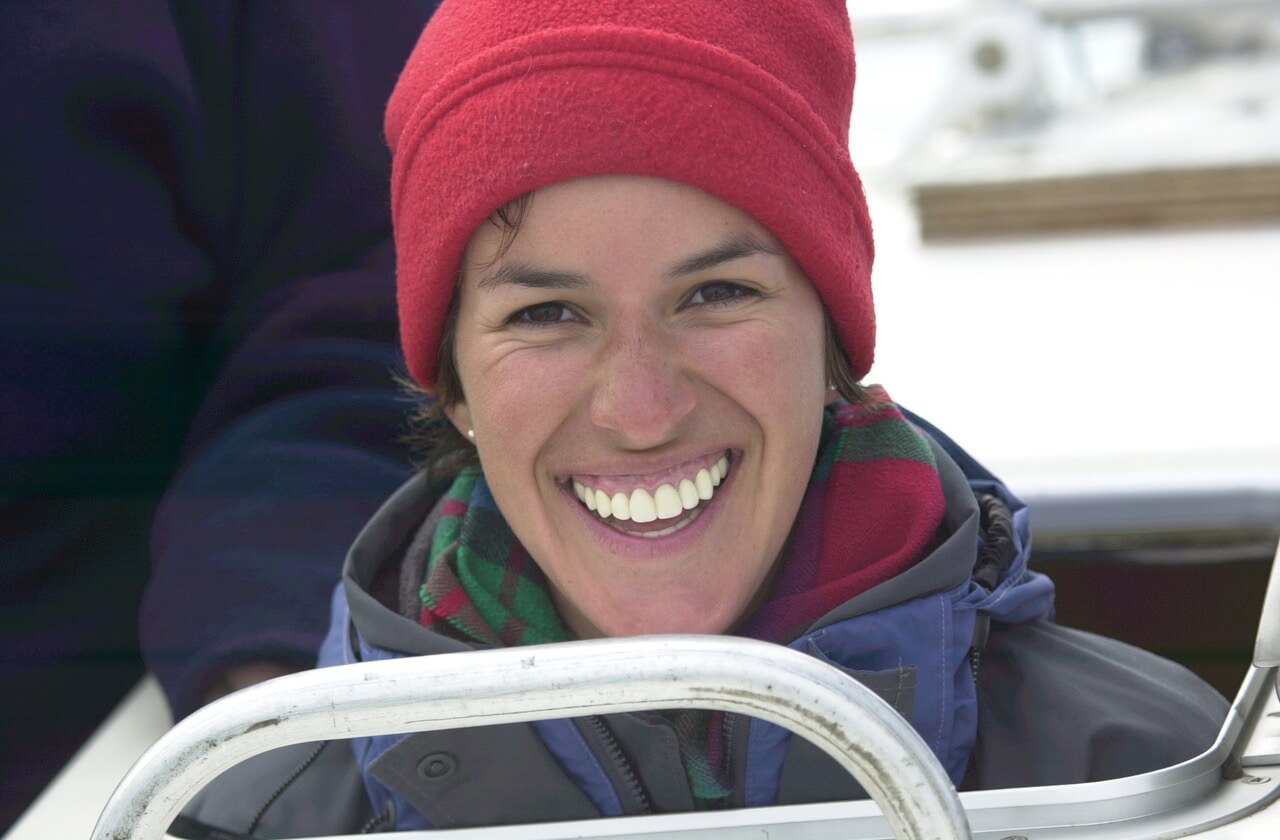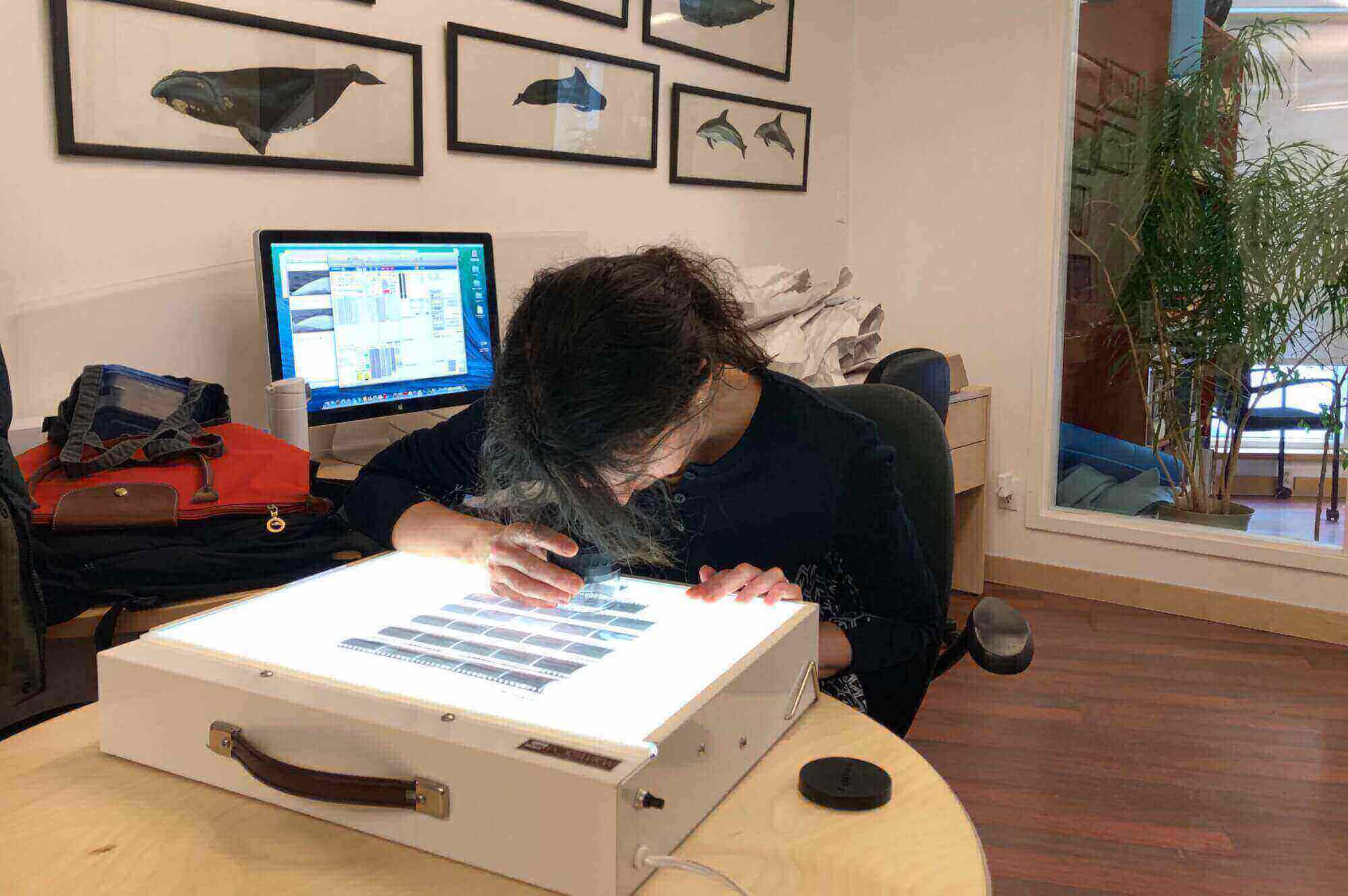To mark International Day of Women and Girls in Science, the Whales Online team decided to retrace the journey of technician Marie-Hélène D’Arcy, who has been employed by the Group for Research and Education on Marine Mammals (GREMM) for over 20 years. Marie-Hélène’s career at GREMM highlights the essential role played by women technicians in the field of marine biology.
Beluga “matchmaker”
It was first as an intern that Marie-Hélène joined GREMM’s team in the summer of 1998 as part of her studies in bioecology. At the time, her professors were encouraging her to study seals, considering whales to be too eccentric a field of research. However, the 23-year-old insisted that her place was with whales, a certainty that had driven her ever since she was a child. Her tenacity paid off, leading her to photograph various species of whales to identify individuals throughout the summer. A few months after completing her internship, she overcame the doubts that her teachers may have had about her choice by earning a permanent position at GREMM. Even if this opportunity caught her off guard, as it prevented her from continuing her graduate studies, her reluctance was quickly quelled by the prospect of being able to chase whales on the St. Lawrence again.
Marie-Hélène’s career quickly followed a path that she had not initially envisaged: beluga photo-identification. This method involves photographing, classifying, and then identifying the individuals observed. It enables researchers to track their movements, characterize their social organization, determine their sex and estimate the number of individuals in the population. For a species at risk such as the St. Lawrence beluga, photo-identification is of paramount importance.
The technician thus spent her summers on research vessels in Tadoussac, attempting to take snapshots of belugas, and her winters in Québec City, where she scrutinized these photos for distinctive features allowing her to distinguish one individual from another such as flank marks, scars, or notches. Perhaps you know Yogi, who owes her name to her bear-shaped mark? Or Marjo who bears a scar resembling a pair of glasses? Amongst other factors, this is thanks to the work of Marie-Hélène and her team of “matchmakers”!
Field experience above all
Over the course of her career spanning more than two decades, the technician’s working methods have changed considerably, in parallel with the technological advances of the time. Laughing, she recalls the time she had to develop her photos in the dark room, or when, not so long ago, she kept them in albums rather than on her computer. Recently, she has been excited about drone-assisted photography, which allows her to view both flanks of a beluga in the same photo, and thus to assign flanks that had been associated with two different belugas to one and the same individual. Marie-Hélène’s work is not without margin of error, in addition to requiring patience and thoroughness, two qualities that she deems necessary for her profession.
Since becoming a mother in 2009, the technician no longer resides in Tadoussac in summer and therefore focuses mainly on identification work in GREMM’s Québec City office. However, she stresses the importance of field work for young technicians, and considers that her past experience allows her to better understand the individuals she studies every day. So, when asked to identify the most significant moment in her career, she does not evoke a specific moment or particular achievement, but rather the memory of her innumerable early-morning trips out to sea, the dawn colours and morning silence interspersed with the spouts of whales.
Driven by curiosity and rigour, Marie-Hélène is pursuing her aspirations by completing a Bachelor’s degree in environmental studies on a part-time basis, a program that she juggles along with her work for GREMM and her family life. Although her journey has taken her down some unanticipated paths, she is proud to have followed her gut feeling, which led her to realize a childhood dream. She strongly encourages women and girls to enter scientific fields and not to be discouraged by the barriers that they might encounter, recalling the hesitations of her teachers, which could have steered her away from the Estuary and belugas and prevented her from becoming, as rumour would have it, GREMM’s sharpest set of eyes.
Pour en savoir plus sur l'identification des bélugas
- With the belugas: "it's a match!" or the fascinating work behind beluga pairing (Whales Online, 16/4/2019)







